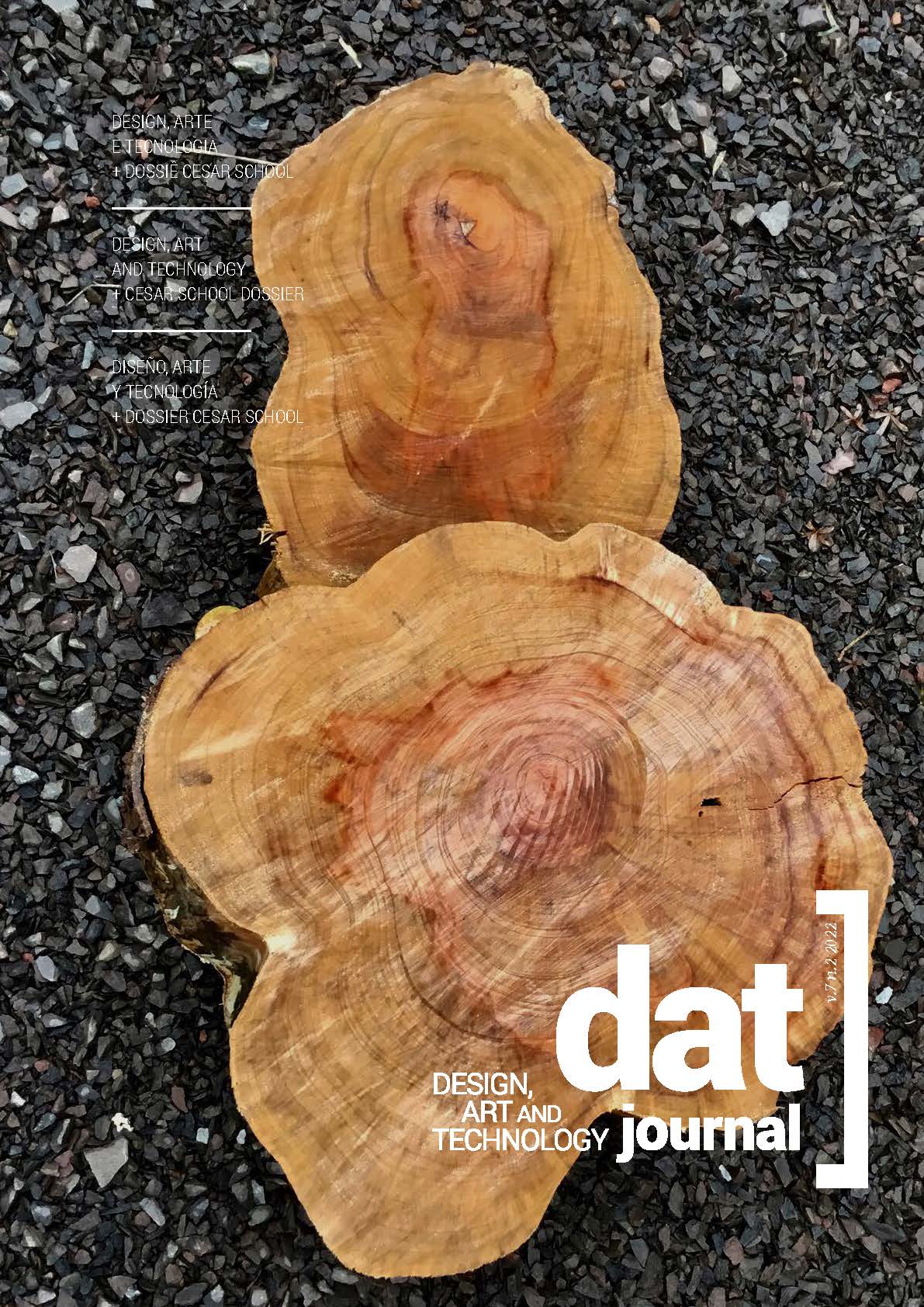The Slow approach and its contribution to Design: a product evaluation
DOI:
https://doi.org/10.29147/datjournal.v7i2.553Keywords:
Slow Design, Slow movement, Design methodology, Sustainability Electric ovenAbstract
The model of ideal dominant in the western countries, which privileges rapid consumption and the constant search for efficiency, seems to be collapsing. The products do not seem to bring more comfort and the acceleration observed at work is transferred to everyday life. The Slow movement opposes this model, arguing that the fastest cannot always be considered the best and that consumption for consumption’s sake is meaningless. This paper presents a proposal for a slow approach to the perception of user needs and the definition of characteristics of products and services based on the consideration of six principles of Slow Design: reveal, expand, reflect, commit, participate and evolve. A literature review on the subject is carried out and an example of application of the Slow Design principles to a consumer product, an electric oven, is presented.
Downloads
References
ARNOLD, C. Ethical marketing and the new consumer. Chichester: John Wiley & Sons, 2009.
ANOVA APPLIED ELECTRONICS, INC. Anova precision oven. San Francisco, CA, 2021. Disponível em: https://anovaculinary.com/ Acesso em: 08 jun 2021
BAUMAN, Z. Modernidade líquida. Rio de janeiro: Jorge zahar, 2001.
BONDEBJERG, I.; GOLDING, P. European culture and the media. Bristol: Intellect Books, 2004.
BURDEK, B. E. História, teoria e prática do design de produtos. São Paulo: Blücher, 2006.
COSTA, S.V., WOLFF, F. Market information management in product design http://dx.doi.org/10.4322/pmd.2016.002 Product, 14(1)47-56, 2016. DOI: https://doi.org/10.4322/pmd.2016.002
CZIULIK, C., SANTOS, F.L. An approach to define formal requirements into product development according to Gestalt principles. http://dx.doi.org/10.4322/pmd.2012.001 Product, 9(2)89-100, 2011. DOI: https://doi.org/10.4322/pmd.2012.001
FEENBERG, A. Critical theory of technology. New york: Oxford University Press, 2009.
GIL, A. C. Métodos e técnicas de pesquisa social. 5.ed. São Paulo: Atlas, 2008.
GROSSE-HERING, B. Slow Design. University of Technology / Institute of Positive Design. ed. Delft: Philips Research Eindhoven, 2011.
GROSSE-HERING, B. et al. Slow Design for Meaningful Interactions. CHI 2013: changing perspectives, Paris, 2013. DOI: https://doi.org/10.1145/2470654.2466472
HAN, Byung-chul. Sociedade do cansaço. Petrópolis: Vozes, 2015.
HONORÉ, C. In Praise of Slow: how a worldwide movement is challenging the cult of speed. Londres: Paperback, 2005.
HUGO, Vitor. Forno anova precision oven aposta em funções profissionais para uso caseiro. 30 de agosto de 2020. Disponível em: https://pratofundo.com/10053/forno-anova-precision-oven-funcoes-profissionais/ acesso em: 14 jun 2021
LIZARRALDE, I, TYL, B. A framework for the integration of the conviviality concept in the design process. Journal of Cleaner Production 197(2)1766-1777, 2018. DOI: https://doi.org/10.1016/j.jclepro.2017.03.108
PAZMINO, A. V. Como se cria: 40 métodos para design de produto. São Paulo: Blücher, 2015.
PINCH, T. J.; BIJKER, W. E. The social construction of facts and artifacts: or how the sociology of science and the sociology of technology might benefit each other. Social studies of science, Sage publications, 14(3)399-441, Aug. 1984. DOI: https://doi.org/10.1177/030631284014003004
RAY, Joe. Review: anova precision oven. In: WIRED, dez 2020. Disponível em https://www.wired.com/review/anova-precision-oven/ Acesso em: 11 jun 2021
ROSE, Brent Anova precision cooker review: killer sous vide for everyone. In: Gizmodo, mar, 2015. Disponível em: https://gizmodo.com/anova-precision-cooker-review-killer-sous-vide-for-eve-1693499013 Acesso em: 15 jun 2021
ROTHMAN, Wilson. From baking to sous vide, this smart steam oven is your new kitchen BFF. The wall street journal. Tech | personal technology: review. Oct. 4, 2020. Disponível em https://webreprints.djreprints.com/4922581368535.html. Acesso em: 11 jun 2021
SIRGY, M. J. Handbook of quality-of-life research: an ethical marketing perspective. Dordrecht: Springer, 2001. DOI: https://doi.org/10.1007/978-94-015-9837-8
SIMONDON, G. El modo de existencia de los objetos tecnicos. Buenos aires: Prometeo, 2007.
SINISCALCHI, V. Au delà de l’opposition slow-fast. L’économie morale d’un mouvement. Lo squaderno: explorations in space and society , 26(7)67-76, dez 2012.
STRAUSS, C.; FUAD-LUKE, A. The Slow Design principles: a new interrogative and reflexive tool for design research and practice. In: CIPOLLA, C.; PERUCCIO, P. P. Changing the change design, visions, proposals and tools proceedings. Turin: Allemandi conference press, 2008.
SILVA, J.T. O Bem Viver e perspectivas para o design sustentável. DAT Journal, [S. l.], 6(1)142–156, 2021. DOI: 10.29147/dat.v6i1.332. Disponível em: https://datjournal.anhembi.br/dat/article/view/332. Acesso em: 28 dez. 2021. DOI: https://doi.org/10.29147/dat.v6i1.332
TORRES, M.L. Diretrizes de projeto com enfoque nos afetos e na memória positiva orientada à sustentabilidade. DAT Journal, 6(1)245–265, 2021. https://doi.org/10.29147/dat.v6i1.339. Disponível em: https://datjournal.anhembi.br/dat/article/view/332. Acesso em: 28 dez. 2021. DOI: https://doi.org/10.29147/dat.v6i1.339
VORONOVICZ, Priscila; ZACAR, Cláudia. Slow Design e os Requisitos para o Design Sustentável. In: Simpósio nacional de tecnologia e sociedade. UTFPR: Curitiba, 2011.
YIN, Robert K. Estudo de caso: planejamento e métodos. 2 ed. Porto Alegre: Bookman, 2001
Downloads
Published
How to Cite
Issue
Section
License
Copyright (c) 2022 DAT Journal

This work is licensed under a Creative Commons Attribution 4.0 International License.


























